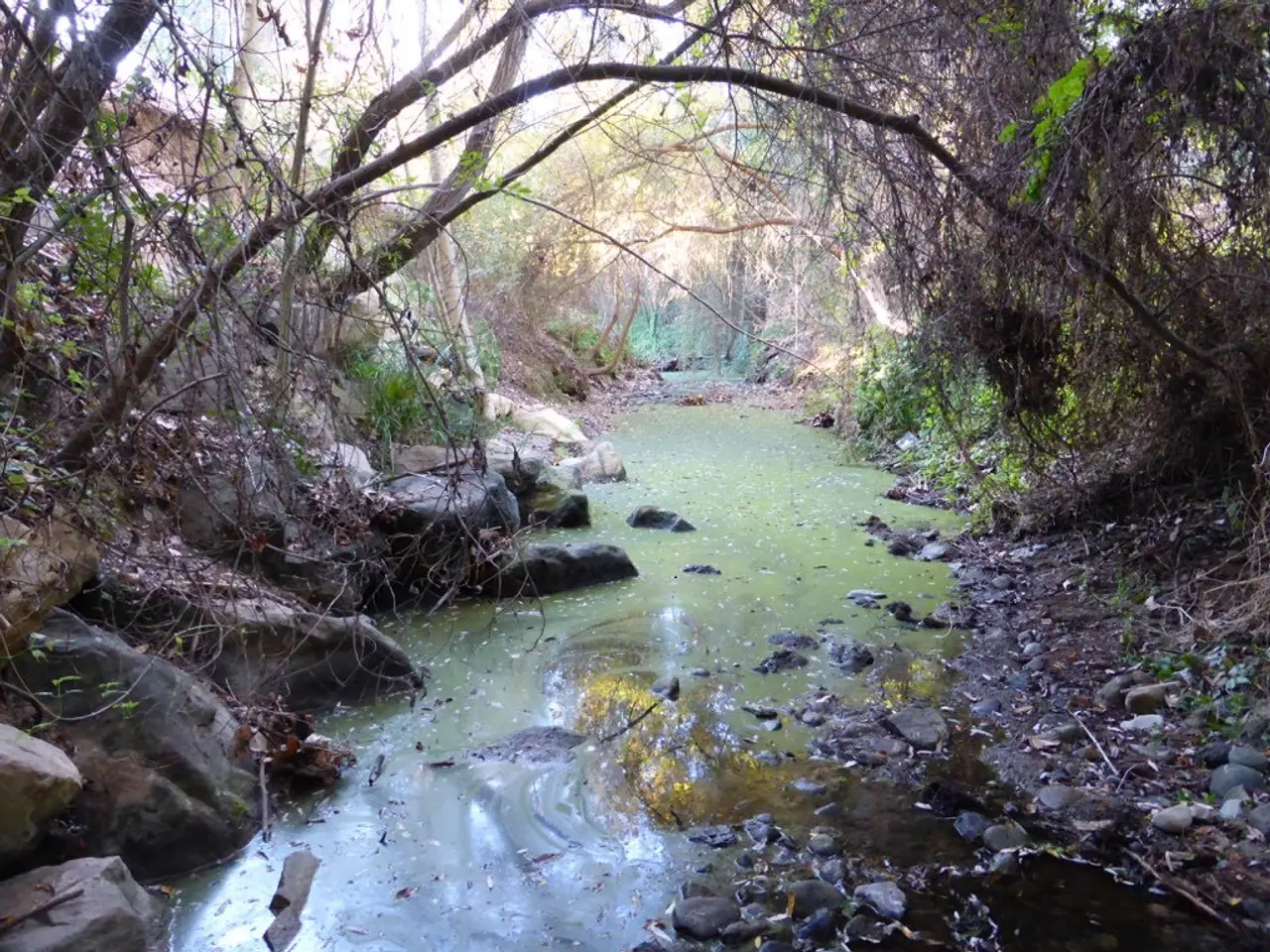lake water quality: crucial factors to consider before swimming
Swimming Safety 101: Staying Healthy in Lakes
Summertime, swim time! But before you cannonball into that inviting lake, let's discuss some tips to ensure your water adventures remain fun and illness-free. Sascha Maier, water expert at German Environmental Aid (BUND), shares his pearls of wisdom.
Blue-Green Algae (Harmful Algal Blooms – HABs) – A Green or Blue-Green Wave?
If the water surface looks suspiciously green or blue-green, or even forms streaks, a blanket, or "clouds," be wary! These could be blue-green algae, otherwise known as harmful algal blooms (HABs). To spot them, look for visible signs such as a change in water color or surface foam. If the water seems cloudy, it's a red flag!
Deep Enough, But Can't See Your Feet? – Keep Out!
Blue-green algae can create hazards, so if you're standing knee-deep in the water but can't see your feet, you've got reason to be concerned. Caution is key, especially after prolonged sunshine, high temperatures, and fertilized fields nearby, as this increases the likelihood of HABs.
Unseen Obstacles – Cercariae and Vibriosis
Tiny creatures like cercariae and vibriosis can ruin your day if you're not careful. Neither is visible to the naked eye, so it's essential to follow local information, observational vigilance, and preventive measures.
Cercariae, minuscule parasite larvae that infect waterbirds (but may invade human skin), cause an itchy skin rash after swimming. Cercariae require water temperatures around 20°C (68°F) and are more frequently found in shallow water areas. Authorities usually provide warnings if a body of water is contaminated with cercariae, so pay heed to them.
Vibriosis, caused by Vibrio bacteria, tends to be active in water above 20°C (68°F), with the potential to worsen existing wounds. Persons with a weakened immune system are at higher risk of severe wound infections, mostly found in saltier waters like the Baltic Sea. To stay informed, read local news.
Clean Waters – Keep it Clean or Stay Away!
Dirt runoff from heavy rain can pollute lakes, making the water murky. Wastewater treatment plants nearby can also contribute to pollution, so be extra cautious when swimming close to shore during summer months.
Want to Know More? – Check Water Quality Online
Informed swimmers are safer swimmers! To learn about water quality in a body of water, visit the websites of the German Environment Agency, the Federal Institute of Hydrology, or the European Environment Agency. Keep in mind that lakes without designated bathing status may not appear in reports. Always respect signs, and refer to local media for additional information.
Remember, being aware of potential health hazards and taking preventive measures can help you enjoy a fun and safe swimming season!
Helpful Tips to Beat Summertime Health Hazards:
- Check local water quality before swimming.
- Avoid areas with posted warnings for HABs, high bacteria levels, or other hazards.
- Avoid stirring up sediment or swimming in murky water.
- Do not swallow water and try to avoid getting water up your nose to minimize infection risks.
- Protect open wounds when swimming to reduce infection risks.
- After swimming, rinse off thoroughly, dry skin, and put on fresh clothes.
- Keep pets and animals away from potentially contaminated water.
- Use protective gear and heed warnings about HABs, swimmer’s itch, and bacterial infections.
- Seek immediate medical care if you develop skin infections or experience other ill effects after swimming.
- Blue-green algae, also known as harmful algal blooms (HABs), can pose a risk in lakes when the water surface appears suspiciously green or blue-green, or forms streaks, a blanket, or "clouds."
- In addition to Blue-green algae, other unseen hazards like cercariae and vibriosis can affect swimmers. Cercariae are minuscule parasite larvae that can cause an itchy skin rash after swimming and are more frequently found in shallow water areas.
- To ensure the health-and-wellness and fitness-and-exercise of swimmers, it's crucial to check the water quality online and follow local information, observational vigilance, and preventive measures, especially when the water seems cloudy or polluted with dirt runoff or wastewater treatment plants nearby.






